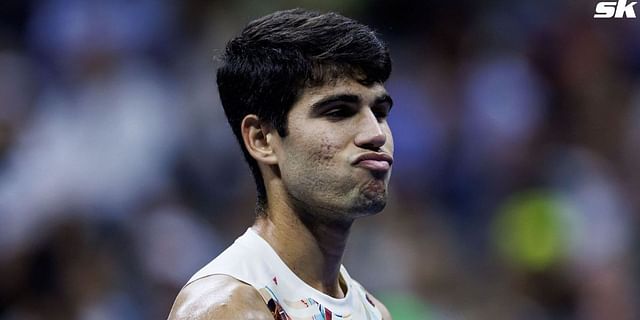
We are truly privileged to witness the emergence of what could be one of tennis’s greatest rivalries: Carlos Alcaraz versus Jannik Sinner. These two young stars are not just future prospects but are already part of the sport’s elite. They’ve met numerous times, with each match further solidifying their growing reputation. Their clashes are already classics, brimming with intensity, aggressive play, and an electric atmosphere. But beyond their aggressive games, what makes this rivalry so captivating is the contrasting styles and attitudes that define these players—both on and off the court.
Alcaraz, the dynamic Spaniard, plays with a level of intensity that is hard to match. His all-around ability allows him to adapt his game to any surface and any opponent. Sinner, the methodical Italian, has a more calculated, powerful baseline game that often overwhelms his opponents. Watching these two players face off is like watching chess being played at lightning speed: thrilling yet strategic. They are constantly pushing each other, and as spectators, we’re fortunate to witness these early battles, knowing that many more will come.
The on-court rivalry, though, is only part of the story. Off the court, Alcaraz and Sinner have found themselves on opposite sides of an increasingly relevant debate in tennis: the physical and mental toll of the demanding schedule. Alcaraz recently voiced his frustrations with the relentless tennis calendar, something that many top players have spoken about in recent years.
“In a way, it is killing us,” Alcaraz said, addressing how the packed tennis calendar leaves little room for rest and recovery. He expanded on this, saying, “Honestly, it’s hard to find motivation. Sometimes I’m not motivated at all. The schedule is tight, there are so many tournaments. No time off. Sometimes I’d like to take a few days for myself, but I can’t. I have to train, I have to travel, there’s jetlag from travelling around the world.” Alcaraz’s comments echo a growing sentiment in professional tennis that the sport’s demanding nature is starting to affect the health and motivation of its top players.
However, the irony of Alcaraz’s criticism was not lost on some, considering where he made these statements: at an exhibition event. Exhibition matches, unlike ATP-sanctioned tournaments, are often less about ranking points or prestige and more about the financial reward. The Laver Cup, one such exhibition, markets itself as a world championship of sorts, but in reality, it remains a luxury event where top players earn significant paychecks for showing up. In 2024, while the Laver Cup was taken a bit more seriously than in previous years, it still falls short of the intensity and stakes of an ATP tournament. Players are well compensated, but critics argue that such events contribute to the burnout Alcaraz mentioned.
This is where Alcaraz’s complaints begin to draw scrutiny. Instead of resting and recuperating, he has chosen to participate in several high-profile exhibition events, including the Netflix Slam, Stars of the Open, and Six Kings Slam, among others. While lucrative, these decisions add hours of travel, more matches, and increased jetlag, all of which Alcaraz has publicly complained about. The Spanish sensation could have taken time to rest on the beaches of southern Spain, recharging after a long and grueling season. Instead, he is constantly on the move, choosing to cash in on the financial opportunities presented by these exhibitions.
On the flip side of the rivalry, Jannik Sinner appears to have a different take on managing his schedule. In contrast to Alcaraz, Sinner has taken a more pragmatic approach. “We’re not obliged to play anything other than the Grand Slams and the Masters 1000s. We have time to play and to rest,” Sinner noted, highlighting the fact that players do, in fact, have the freedom to tailor their schedules to their needs. Sinner’s balanced approach reflects a broader understanding of the importance of physical and mental well-being in maintaining a long career in tennis.
The issue of the tennis schedule is not new, and it’s not just a problem for Alcaraz. Many players before him, including legends like Rafael Nadal, Novak Djokovic, and Roger Federer, have all faced periods of burnout due to the packed calendar. In the 1970s, Guillermo Vilas famously played 25 tournaments in one year, winning an astonishing 16 titles in 1977. However, that kind of physical demand is unsustainable in today’s game, where power and physicality have increased exponentially.
As tennis has evolved, the game has become more about endurance and athleticism than it once was. Few players retire completely healthy, and even with modern advancements in sports science and recovery, the body can only take so much punishment. Players today are increasingly being pushed to their physical limits, and while Grand Slams now only require men to play best-of-three sets (except in the actual Slams), the constant travel, jetlag, and minimal off-season remain significant hurdles to player longevity.
This rivalry between Alcaraz and Sinner is likely to dominate the tennis landscape for the next decade. But whether Alcaraz can sustain his current level of play given his packed schedule remains to be seen. Sinner’s approach, focused on balancing competition with rest, might give him the edge in longevity, while Alcaraz’s all-in style could lead to burnout unless adjustments are made.
One thing is certain: both players are incredible talents, and their matches will continue to be highlights of the tennis calendar. However, if either hopes to dominate the next 10 years, managing their physical and mental well-being will be just as important as improving their game. As they battle for titles and carve out legacies, the question of how to balance performance with recovery will loom large. Only time will tell who will emerge on top.
Leave a Reply